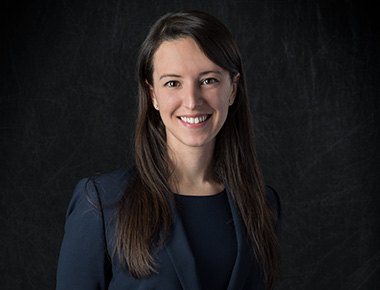Alerts
driven thinking
Immigration By the Numbers: Key Stats on FY2026 H-1B Cap Lottery and Next Steps
Overview
With the first round of the H-1B cap lottery completed in late March, the United States Citizenship and Immigration Service (USCIS) has now released statistics for this year’s H-1B cap registrations and selections.
USCIS reported that it received eligible registrations for 336,153 unique beneficiaries in the Fiscal Year (FY) 2026 H-1B cap and selected 118,660 unique beneficiaries. This represents a selection rate of approximately 35.3%.
The number of eligible registrations for FY 2026 dropped by a noteworthy 26.9%, with 343,981 for FY 2026 compared to 470,342 for FY 2025.
USCIS has not announced whether there will be a second lottery, as this depends on the number of H-1B cap petitions received during the initial filing window, which is set toclose on June 30, 2025.
Key Takeaways from this H-1B Cap Season
This is the second year that USCIS has utilized a beneficiary-centric selection process implemented pursuant to the Improving the H-1B Registration Selection Process and Program Integrity rule, whereby each unique beneficiary is entered into the selection process once, regardless of how many registrations have been submitted on their behalf. This measure was enacted as an attempt to combat fraud in the process that was seen in prior years when multiple employers would jointly file registrations for the same beneficiary to gain an unfair advantage in selection rates. This rule continues to have a notable impact on the H-1B cap registration process. The number of eligible registrations for FY 2026 dropped by 26.9%, with 343,981 for FY 2026 compared to 470,342 for FY 2025. There was an average of 1.01 registrations per beneficiary in FY 2026 as compared to 1.06 for FY 2025.
The number of unique employers submitting registrations in FY 2026 (approximately 57,600) was comparable to the number in FY 2025 (approximately 52,700). The increase in the number of unique employers may be partially due to the H-1B Modernization Rule implemented in January 2025 that facilitates access to H-1B visas for entrepreneurs, startups, and businesses owned by H-1B cap beneficiaries.
Background
The H-1B program allows U.S. employers to temporarily employ foreign workers in occupations that require the theoretical and practical application of a body of highly specialized knowledge and a bachelor’s degree or higher in the specific specialty, or its equivalent. Currently there is an annual numerical limit of 65,000 visas each fiscal year (known as the “Regular cap”). There are an additional 20,000 H-1B visas available for beneficiaries with a master’s degree or higher from a U.S. institution of higher education (known as the “Master’s cap”). The Regular cap is further reduced by carve-outs for the H-1B1 visa for nationals of Chile and Singapore under the provisions of free trade agreements between the U.S. and each country, leaving the actual number of Regular cap H-1B visas that are available at 58,200.
Each year, USCIS selects more registrations than there are visa numbers available based on its projections of how many selected employers will file petitions and receive USCIS approval.
The current limit on H-1B visas was set in 1990 when the H-1B category was created by Congress. The American Competitiveness and Workforce Improvement Act of 1998 (ACWIA) and the American Competitiveness in the Twenty-first Century Act of 2000 (AC21) made significant changes to policy and procedures for the H-1B classification, including providing temporary increases to the numerical limits. Under ACWIA, the number of available H-1B visas increased to 115,000 in FY 1999 and 2000. AC21 further increased the number of available visas to 195,000 for FY 2001, FY 2002, and FY 2003. In FY 2004, the H-1B cap reverted to 65,000 visas per fiscal year and remains at that level. Except for the special allocation of visas for the Master’s cap, established in 2006, there have been no increases to the number of H-1B visas that are available each year since the sunset of the ACWIA and AC21 provisions.
What Employers Need to Know & H-1B Visa Alternatives
The H-1B program, which is based on numerical limits set over 30 years ago, still remains terribly short of meeting the needs of the U.S. economy in the global competition for talent, particularly in STEM fields.
Due to the limited numbers of H-1B visas available, U.S. employers are driven to leverage alternatives to the H-1B classification in order to retain talent in their workforce. Employers should work with legal counsel on strategizing any available alternatives for those not selected in the H-1B cap lottery.
For more information, please contact your designated Gibney representative or email info@gibney.com.


